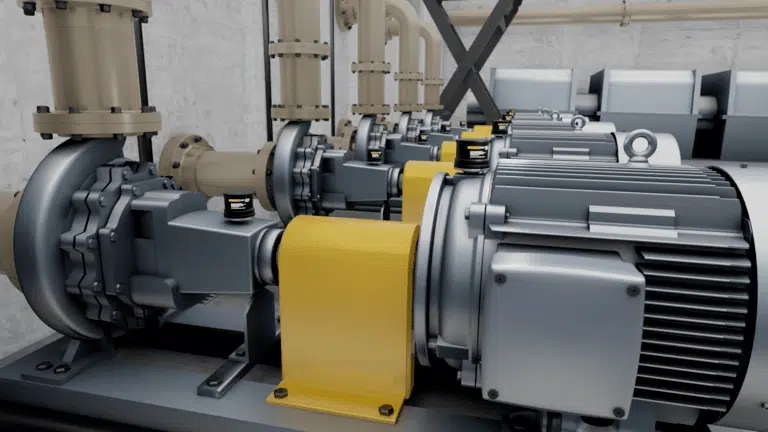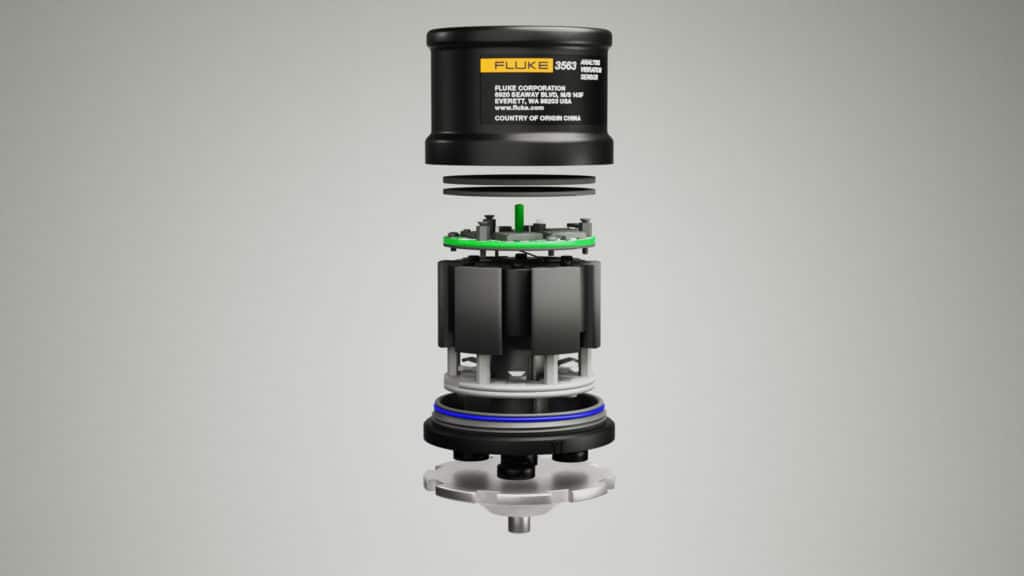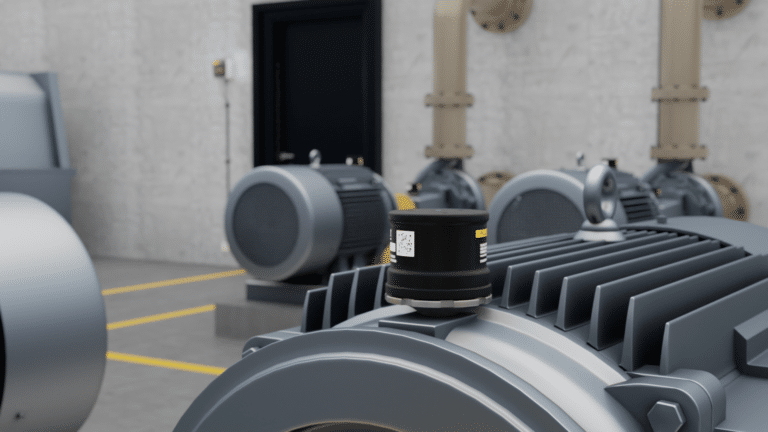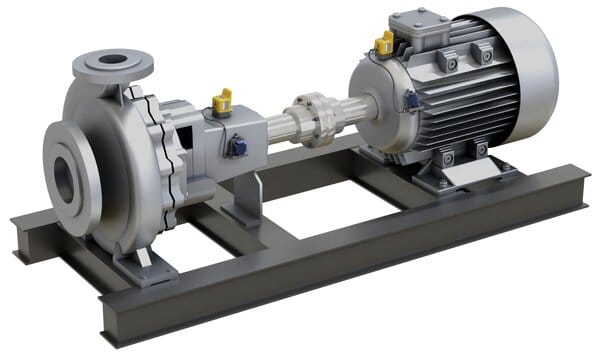Preventing bearing failure ensures your organization stays up and running at peak efficiency. An effective bearing monitoring program requires you to understand the common causes and symptoms of bearing failure.
Healthy bearings are essential to reliable and energy-efficient machine operation. A single bearing failure has the potential to cause a full equipment shutdown, resulting in many hours of lost production time.
An effective bearing monitoring program will help you prevent bearing failures across a wide range of assets, ensuring your organization continues operating at peak efficiency.

An Analysis of Bearing Failure
Every year, an estimated 10 billion bearings are manufactured worldwide. But only a small percentage of bearings experience failure. In fact, some 90% of bearings outlive the equipment they are installed in. Most of the remaining bearings are replaced prior to failure thanks to effective bearing monitoring and preventive maintenance strategies.
That leaves 0.5% of bearings that must be replaced either due to irreparable damage or failure. That still means some 50 million bearings around the world must be replaced every year due to damage or failure. Bearing failures can result in lost productivity and time, and sometimes even cause entire plants to be shut down.
To ensure your organization has an effective bearing monitoring program, you need to understand the common causes and effects of bearing failure, as well as the most effective strategies for monitoring and preventing bearing failure.
Common Causes of Bearing Failure
There are several common reasons why bearings fail or get damaged. The most common bearing failure modes include fatigue, deformation, lubrication failures, corrosion, electrical damage, and incorrect design. Generally speaking:
- One-third of bearing failures are due to fatigue.
- One-third of bearing failures are due to lubrication problems (incorrect lubricant choice, quantity, or interval).
- A small percentage of bearing failures are due to contamination (ineffective seals).
- A roughly equal small percentage of bearing failures occur for other reasons (improper handling and mounting, excessive loads, wrong fits, etc.).
Based on the above bearing failure analysis, it’s clear that fatigue and improper lubrication should both be considered primary concerns in any bearing monitoring program.
What Happens if a Bearing Fails?
When a bearing fails – whether due to fatigue, improper lubrication, damaged seals, or something else – it doesn’t just mean the bearing needs to be replaced. A single bearing failure can cause a cascading chain reaction that can bend shafts and cause major damage to other coupled equipment. Bearing failures can even put workers at risk of harm.
Fortunately, many common bearing issues can be identified long before they become major problems. And that’s largely thanks to the distinct vibration measurement patterns they produce during normal operation. When that vibration changes, it’s the first sign of a problem. As long as you have the tools in place to catch the variance from normal vibration levels, you can easily get ahead of bearing failure.

What are Traditional Bearing Monitoring Techniques?
Ensuring bearings meet or exceed their operational lifetimes depends on a number of factors, including bearing quality, storage, and stocking practices, proper mounting and lubrication, effective sealing, and use in the appropriate operating conditions. Traditional bearing condition monitoring techniques largely relied on three main methods, all related to human senses:
- Visual monitoring (sight)
- Audible monitoring (sound)
- Vibration monitoring (touch)
In the past, maintenance and repair technicians looked for, listened for, and felt for early warning signs of bearing failure. However, manual methods are always prone to error. Fortunately, with the advanced sensitivity of modern condition monitoring sensors, you can more easily detect extremely early warning signs of potential bearing failure that the human senses might miss.
Online condition monitoring systems also can be deployed to instantly track and record the real-time data captured by such sensors, helping your organization carry out an effective bearing condition monitoring strategy.
What is Bearing Condition Monitoring?
Although fatigue and improper lubrication are two of the most common causes of bearing failure, they are also rather straightforward to spot before they become major problems. You simply need to deploy an effective bearing condition monitoring program.
There are many types of condition monitoring tools you can use to stay ahead of preventable maintenance problems. For example, power monitoring measures fluctuations in current, voltage, and frequency, alerting you to changes in the energy usage of your assets. In addition to causing unnecessary wear and tear, such energy fluctuations may also point to safety concerns that should be immediately addressed.
An effective condition monitoring program for bearing failure typically relies on sensors and hand-held devices to precisely measure the “vital signs” of your assets, including power usage, vibration frequency, temperature, and much more.
These electronic devices allow you to continuously track the health of your machines, alerting you to any faults or abnormalities early on so that you can make repairs and avoid costly unplanned downtime. One especially powerful group of bearing monitoring tools is vibration sensors.

How to Use Vibration Sensors for Bearing Monitoring
An effective bearing monitoring program usually includes vibration monitoring, as changes in vibrations are often the first sign of future bearing failure. By measuring the intensity and frequency of vibrations, handheld, wired, or wireless vibration sensors can detect and alert you to abnormal readings months before it becomes a serious problem. This gives you the time you need to effectively plan downtime to carry out the necessary preventative maintenance.
What are the Benefits of Bearing Condition Monitoring?
By carrying out a bearing condition monitoring program, you can help ensure your organization’s maintenance strategy is preventive rather than corrective. This means you will catch problems before they result in asset failure, reducing maintenance costs and increasing productivity.
Fortunately, today’s modern technology makes carrying out an effective bearing monitoring program easier and more cost-effective than ever. Advances in both sensors and software mean that deploying a cutting-edge conditioning monitoring program is not only feasible, it is a smart financial decision, helping you cut costs and increase uptime.
In other words, organizations that have a strong bearing conditioning monitoring program will not only stay ahead of bearing failures, they’ll also stay ahead of the competition.






